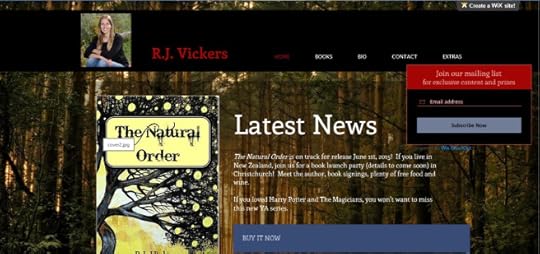R.J. Vickers's Blog, page 3
May 18, 2015
Do you want to know my deepest, darkest secrets?
One of the most important parts of an author’s online presence, I’ve learned, is their website. Someone who looks at an author’s website is far more likely to buy their books than someone who doesn’t. And the key to a good author website is engaging the readers.
How do you do that?
By providing information they’re looking for (like the author bio, a list of their books, and other important details), and by giving them fun extra material that can’t be accessed elsewhere. This can include: 
Excerpts or sneak peeks
Q&A with the author
Video interviews
Book trailers
Other book tie-ins
Games, prizes, or giveaways
I’m currently in the process of adding several of these to my own website. I’m hoping to do several tie-ins related to hiking and backcountry safety, which will provide extra material for kids to engage in after we’ve given wilderness first-aid talks (incentive to visit the website).
 I have, however, just put up the Author Q&A page–check it out! It contains info about The Natural Order and about my writing process, plus a few random questions.
I have, however, just put up the Author Q&A page–check it out! It contains info about The Natural Order and about my writing process, plus a few random questions.
If you have any questions that I didn’t answer this time around, let me know!


May 14, 2015
Countdown…15 days to publication!
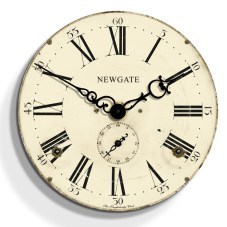
As I sit here with just 15 days left until the release of The Natural Order, I can’t help thinking of everything I still have to do. So this post will serve as a bit of an inventory: things I’ve finished, things I’ve started, and things I haven’t even touched yet.
It will give you a bit of an overview of my marketing scheme so far, and of course, if you have any further suggestions of something I have missed, I would love to hear in the comments below!
Things I’ve done:
Finished the final read-through of The Natural Order, correcting all of the typos that somehow got ignored in the past (I’m a stickler for proper grammar, so I don’t let much slip!)
Designed the cover
Set up my website (though some of the pages are still incomplete)
Things I’ve started:
The blog! I’ve been more consistent with this than I expected, though I don’t know how long it will take to see results (such as an expanded readership).
Getting the book ready for online release. I’ll work on formatting it for Kindle tomorrow.
Spreading word to everyone I know.
Things I haven’t even touched:
The book tour. I’ve been putting this off, so expect updates sometime in the next week when I finally get around to planning it.
The book launch party. I still have to pin down the date, so I can’t decide any specifics until then.
My author brand. I need to decide on one, but I’m having trouble coming up with anything specific. (Suggestions welcome!!)
Most of the extra pages on my website. I have to work on an author Q&A, a sales page, and several other book tie-in pages.
The most exciting news, though, is that I’ll be ordering my first set of copies tomorrow! They won’t arrive by the official release date, but I definitely need them before the book launch party. If you have any questions you want answered in my first Q&A page on the author website, let me know in the comments below.


May 12, 2015
Why you should always, always order a proof…
I’m just a few days away from my first print run for The Natural Order. For everyone in the US who orders a copy, it will be print-on-demand, meaning each order is printed individually and I don’t have to stock any copies.
Here in New Zealand, though, I’m planning to hold the book launch party in early June, followed quickly by a book tour during which we attempt to get the book into as many 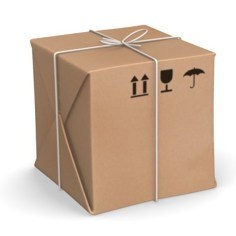 independent bookstores as possible. I have a feeling it will be less of a challenge to get bookstore placement than in the US, because the smaller population means fewer authors and therefore a higher interest in authors who actually live in New Zealand.
independent bookstores as possible. I have a feeling it will be less of a challenge to get bookstore placement than in the US, because the smaller population means fewer authors and therefore a higher interest in authors who actually live in New Zealand.
Anyway, yesterday my first two proof copies arrived in the mail, just in time. I had almost given up on waiting for them and ordered several hundred copies before checking to make sure they were right.
Well, that would have been a BIG MISTAKE!!
When Createspace tells you the photo you’ve chosen is too small a file to make a high-quality cover, they mean it. Even though the photo was such a high resolution that it still looks crystal-clear blown up to twice the size of the actual cover, the printed cover was horribly pixelated, and what’s more, the perfectly centered title was skewed to the right.
I spent hours last night fixing the new cover to make sure it doesn’t happen again.
I almost resorted to taking a photo of the cover and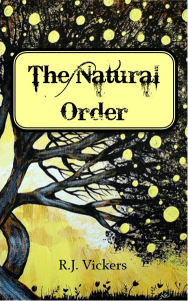 blowing that up, though it would certainly have resulted in a loss of detail. Instead I discovered that you can just change the dimensions of the photo so it’s large enough to fit Createspace’s requirements.
blowing that up, though it would certainly have resulted in a loss of detail. Instead I discovered that you can just change the dimensions of the photo so it’s large enough to fit Createspace’s requirements.
You know what really confused me, though? Createspace says the photo file must be a minimum of 300 dpi (dots per inch)…and my original file was exactly 300 dpi! I ended up tripling the original file size before Createspace recognized it as large enough.
You can see why I’m not a huge fan of technology!
This whole book project has exponentially increased my understanding of computers, though. Before I didn’t know anything about websites beyond the fact that you can make one using a basic template on WordPress, and now I know all about domain hosting and SEO.
Anyway, that’s certainly a lesson for the future–never, ever order a large number of copies of anything without first making certain that the proof is perfect.


May 8, 2015
Introducing…my fancy new author website!!
Check out my new author website! It looks very slick and professional, right?
This is part of my goal with publishing and marketing The Natural Order. It may be self-published, but it doesn’t have to look homemade. That means no detail is too small to overlook. Everything needs to look professional, including:
The cover
The website
The interior design
The editing (flawless grammar, spelling, etc.)
The publicity materials (I’m planning to hand out bookmarks to advertise both the book-launch party and the author website)
It’s taken a lot of extra effort, and many headaches, but I am very happy with both the cover design and the website. After looking back at my initial attempts at both of these, I’m quite glad I did not settle for less!
I’m currently making a final round of revisions to the text, fixing a few issues my trusty editors have spotted, and doing my own final read-through to be sure every single sentence flows smoothly. The plot is there and the characters are there, but I want to be certain I don’t pick up the printed edition in a few years and wonder how I could have missed such a sloppy sentence.
Next on the to-do list? My first print run!


May 7, 2015
Introducing…the official book cover!
After many drafts (and after I learned a great deal about installing new fonts), I have finally come up with my official cover for The Natural Order.
about installing new fonts), I have finally come up with my official cover for The Natural Order.
From the start I knew the border for the title had to be more exciting, but after looking at a pile of other young adult novels, I realized that not a single one used bland, straightforward text. This one fits the mood and intrigue perfectly!
And here is the full spread, including the back cover (for those of you who want a bit of a teaser…)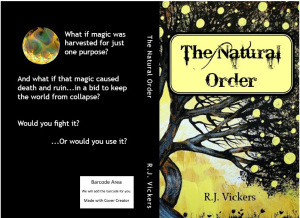


May 5, 2015
Is Anyone Listening? Public speaking as a (sneaky) way to sell your book
 I’ve been reading Rob Eagar’s Sell Your Book like Wildfire, and one of his chapters is all about how valuable public speaking opportunities are—both for your book sales and for your career as a writer. He was very persuasive! Unfortunately, most of the speaking opportunities he described are related to nonfiction books.
I’ve been reading Rob Eagar’s Sell Your Book like Wildfire, and one of his chapters is all about how valuable public speaking opportunities are—both for your book sales and for your career as a writer. He was very persuasive! Unfortunately, most of the speaking opportunities he described are related to nonfiction books.
You see, the whole reason someone will book you as a speaker is because you can provide value. Talking about the fact that you just published a book, and isn’t that great!, and you should buy it!—that’s not value.
It’s easy to see why nonfiction authors can demonstrate value. Maybe they’ve written a self-help book, and they can teach the audience some of the lessons included in the book. Maybe they’re a relationship coach, and they can help people with their struggling relationships. Or maybe they’re a food writer who can give a cooking demo.
Fiction authors have a much harder time with this. I was completely stumped, until recently. The Natural Order is a YA novel, so it’s aimed at middle school and high school students. What on earth could I talk about that would interest them?
Then my partner and I got to talking. 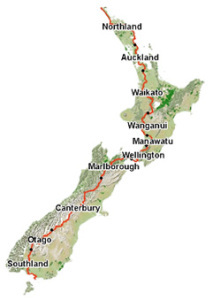
We’re hoping someday to do the Te Araroa, which is a hike that runs the length of New Zealand, and while we’re hiking, he wants to stop at schools along the way and give wilderness first-aid talks to the kids. See, we’re both big hikers, and on top of a paramedic and nursing degree, he used to be part of the ski patrol in Montana. Plus, he was a firefighter.
Kids love that sort of thing.
As it turns out, The Natural Order is set in the Canadian wilderness, and the characters occasionally have to survive disasters of their own—the same sort of things you would talk about in a wilderness first-aid class. Things like avalanches (especially a problem in New Zealand, with the extremely steep mountains!), hypothermia, and getting lost in the woods.
My partner could do a wilderness first-aid talk for middle-schoolers and high-schoolers, and reference The Natural Order for examples of situations that you could find yourself in while hiking in the woods!
Perfect. It’s useful for teachers, fun for kids, and not obviously a sales ploy.
We’ll give it a try in mid-June (it’s winter here in New Zealand, so they won’t be on summer break), shortly after the book has been released, and see if it generates any results!


May 4, 2015
Why on earth would anyone self-publish a book?
10 or 15 years ago, self-publishing was the stupidest idea any writer could come up with. I remember reading a silly children’s book, The Great Mom Swap, where one of the characters has dreams of publishing a book…and is then devastated when she realizes the publisher who has noticed her is a vanity press, meaning they want her to pay a ton of money to print her book, without any distribution whatsoever.
idea any writer could come up with. I remember reading a silly children’s book, The Great Mom Swap, where one of the characters has dreams of publishing a book…and is then devastated when she realizes the publisher who has noticed her is a vanity press, meaning they want her to pay a ton of money to print her book, without any distribution whatsoever.
That is what self-publishing used to look like: authors wanted to see their name on a book cover, and didn’t realize that a genuine publishing company was necessary to actually sell that book.
But things have changed a lot in 15 years. For one, the internet has become the biggest marketing platform ever to exist. Now, if a customer wants to find your book, they don’t have to walk into Barnes and Noble. They can just order it on Amazon.
I’m not saying publishing houses are outdated. They’re not. If you want your book to get major bookstore distribution, a publisher is your best bet. And no Amazon service can replace the benefits of a professional editor, proofreader, and cover designer.
However, there are actually some downfalls to traditional publishing. I definitely hope to be published by a traditional house someday, especially when I am ready to unveil my epic fantasy world, but even with a traditional publishing house, I can’t escape the fact that I am woefully ignorant in the ways of book-marketing.
That’s one big problem authors face even when their books are traditionally published–they assume the publisher will do all of the marketing and promotional work for them, when this really just leads to your book sliding by unnoticed. Whether you’re self-published or traditionally published, most of the marketing burden falls on your shoulders.
The Natural Order is a chance to educate myself, to see what works and what doesn’t.
And here are a few reasons why self-publishing can actually be better than traditional publishing:
The biggest one, for me, is that when your book is traditionally published, you have no way of seeing the results of your marketing efforts…until months after they have happened. If your publisher hosts a big giveaway or contest, or you go on a book tour, or you invest in a paid placement, how can you tell if the money and time was well-spent? With traditional publishing, you can’t. You can only see results in the form of infrequent royalty checks, which might speak more about a general trend than about the success of a particular effort. As a self-publisher, you can track your sales in every form on a day-to-day basis, which shows you whether sales spiked after a particular event or just grew (or declined!) in a general trend. That way you can give up on marketing efforts that didn’t work, and invest more in the ones that produced results.
You can’t be lazy. With no publisher to supposedly market your book, you have no excuse to sit around and wait for sales. It’s up to you to build the buzz, find people who care, and make it happen.
You could make more money from each book sale! This is only helpful if your book sells well, though, because a traditional publisher gives you an advance payment whether or not your book sells.
You get to design the cover. Whether that’s a good or bad thing can be left up to debate, but I know many authors wish they could design their own covers. Instead, most of them aren’t even given a choice in the matter. Even your title could be changed! I’m betting most writers would benefit from a publisher-designed cover, but who hasn’t dreamed of putting their own cover on a book?
By the way, rjvickers.com is currently being redesigned–stay on the lookout for the fancy new site! And when it is unveiled, I’ll add a few exclusive goodies on the site!


April 29, 2015
Food for Thought: Can we learn from the earthquake in Nepal…and the drought in California?
Every disaster comes with two sides of the story. We’re all thinking about disasters these days after the Nepal earthquake, and when people suggest that a catastrophic event like that might come with a silver lining (Build back better!), that sounds foolishly optimistic. Especially after the somewhat dismal rebuild efforts in Haiti. I’ve had a personal look at the aftermath of one of these disasters, as I’ve spent the last year living in Christchurch, a city still very much in the process of rebuilding following its 2011 earthquakes. While the death toll was much lower in Christchurch than in Nepal or Haiti, a huge number of buildings were completely demolished, changing the face of the city forever.
But what does the California drought have to do with earthquakes?
That’s the other side of the story.
If we look at them the right way, these disasters remind us that we can’t just focus on our lives in the here and now–there are consequences to our choices that will affect us in the future.
It’s so easy to forget about the larger consequences of our actions–not just as individuals, but as a race. Who wants to conserve water for some future drought when an abundance of clean water still runs out of their taps every day? Who will choose to go vegetarian–or to avoid pesticide-heavy foods–in an effort to conserve water, when that water use happens so far away it seems inconsequential?
For many years, the answer to that was: very few people.
But now, with the major drought showing no signs of letting up in California, people are starting to talk about these long-ignored issues. They are changing their habits–abandoning water-hungry lawns, passing regulations to limit the heavy industrial use of water, and choosing foods that require less water to produce.
Humans are a very narrow-minded race in many ways, though. We are prone to think about ourselves as an exclusive unit, not as part of the global ecosystem. Our economic models prove this–we treat the economy as a closed system with a series of inputs and outputs, not as something that exists within a closed world, where the inputs are inevitably dwindling and the outputs (pollutants in all their forms) are building up to the extent that they have come back to bite us.
But we should take note from the disasters we witness, and see them as what many of them are: symptoms of a growing problem, not random events. Even earthquakes show us the danger of building cities so quickly that we ignore structural safety. And regardless of how we respond to these disasters, there are a few things we ought to be reminded of.
A shoddily-built house in an earthquake-prone area will not stand forever.
Diminishing water tables will eventually run dry.
Cities built in the face of the ocean will eventually succumb to the sea.
And throughout the world, we are becoming a species living on borrowed time.
As environmentalist Murray Grimwood has put it, “We are a species in what is known as ‘overshoot.’ We have overshot more in proportion to our sustainable numbers than most species could ever achieve.” (Check out Murray’s powerful, thought-provoking writing at his blog, https://powerdownkiwi.wordpress.com/ )
Here in New Zealand, we are experiencing a smaller version of this ‘species overshoot’ in the mice and rats in our forests. Last year was a year of prolific seeding for the beech tree forests, which caused rodent populations to boom. You can see mice everywhere in the forest, scampering over logs and gnawing at backpacks in an attempt to steal food. As soon as the food source is gone, the mice will search for whatever supplemental nourishment they can find (devastating bird populations in the process), and when that is gone their population will collapse. It is a tidy cycle, a process that repeats itself throughout history on larger and smaller scales.
As Murray Grimwood puts it, our own “food source” is fossil-fueled energy…except once that is gone, it will never be replenished. We are reaching the point where, like the mice, our primary “food source” is beginning to falter, and we’re growing desperate in search of something new. The problem is, anything we find will only postpone the inevitable.
So, as we ponder how best to respond to the California drought or the Nepal earthquake, we ought to ask ourselves: are we treating the symptoms…or targeting the problem itself?


April 22, 2015
Lemon cake…made by Tristan’s friends in The Natural Order!
When Tristan accidentally grows a lemon tree, his school has an abundance of lemons. So the chef starts cooking all sorts of lemony treats, like lemon cake…lemon meringue pie…lemonade…lemon tea…lemon cookies…
That’s the inspiration for the cover design, by the way.
Here’s a recipe that they might have made! I’ll be trying it before long; it sounds delicious.
Lemon Genoise Cake

via Vegan Lemon Genoise Cake Recipe – Food.com.
(In case you didn’t know, I’m vegan, so most of the recipes I use will be vegan :))
April 21, 2015
Would you sell your book at a backcountry hut?
What’s the least practical book-selling location you can think of? 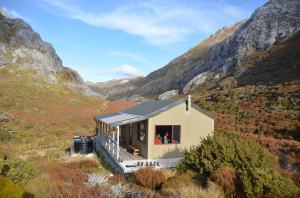
A cute wee backcountry hut in New Zealand would probably go somewhere on the top-ten list, after “underwater” and “while racing go-karts.” But I have a feeling it would be a surprisingly successful choice! I’ll get back to you once I’ve given it a try; for now, here are the (obvious!) cons and surprising pros of back-country huts as marketing platforms.
Cons:
You have to lug a whole lot of books through miles of wilderness to reach them (unless you’re lucky enough to know so
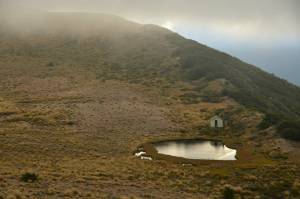 meone with a helicopter!)
meone with a helicopter!)If it starts raining, you’d better have an amazing waterproof bag.
Sometimes the hut doesn’t exist (Ahem–our recent experience with the Rockburn Hut. There was a very small sign at the start of the trail warning hikers that the hut had been taken out by a tree, but we obviously didn’t notice that…)
Pros:
Huts are one of the few places in the world where strangers come together and share their time, entirely without technological distractions. Hostels have a similar trend of bringing people together, but oftentimes travelers are busy working their way through a hefty sightseeing list or just trying to get a group together to go partying. At a backcountry hut, people who have no business ever meeting can spend hours together, just playing cards and talking and sharing their supper.
The people you meet at huts are genuinely interested in you. They’re not talking to you just because you’ve pestered them, or because it’s socially expected. They’re avid explorers, just like you, and they love to hear your story–where you’ve been, which huts are your favorite, and what you do in real life. This means that, if you happen to mention you’re an author, they’ll probably be clamoring to buy your book without any hard selling needed on your part.
Some of the hikers have inevitably underestimated how much down time they’ll have. Especially in summer, the sun doesn’t set until late, so you can reach the hut by dinnertime and still have several hours of daylight to burn. And if you’re a savvy hiker, you might have decided to ditch the extra weight of a book…a decision you’re now regretting. That means you might be tempted to replace the weight of the food you’ve eaten with a book that will help while away your relaxing hut-time!
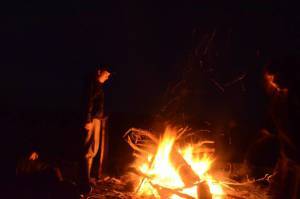 Hikers love joining in on group activities, like storytelling and read-alouds. My boyfriend discovered this by accident while we were staying at a hut near Wanaka. While we were playing cards with a pair of preteen girls and their families, the two girls discovered that both my boyfriend and I were novelists. They begged to hear more about our stories, and that turned into a cozy storytelling session by the fire–the girls and their families, along with several other hikers, pulled benches up close to the hearth to listen as my boyfriend narrated his story in great detail. I expect this would work equally well with reading aloud a section of a published novel. If you leave off on a cliffhanger, no one will be able to resist buying the book!
Hikers love joining in on group activities, like storytelling and read-alouds. My boyfriend discovered this by accident while we were staying at a hut near Wanaka. While we were playing cards with a pair of preteen girls and their families, the two girls discovered that both my boyfriend and I were novelists. They begged to hear more about our stories, and that turned into a cozy storytelling session by the fire–the girls and their families, along with several other hikers, pulled benches up close to the hearth to listen as my boyfriend narrated his story in great detail. I expect this would work equally well with reading aloud a section of a published novel. If you leave off on a cliffhanger, no one will be able to resist buying the book!Hikers are also travelers, which means they come from all over the world–and are in the process of seeing as many countries as they can manage. If they like your book enough, just think of how many people might hear about it!



